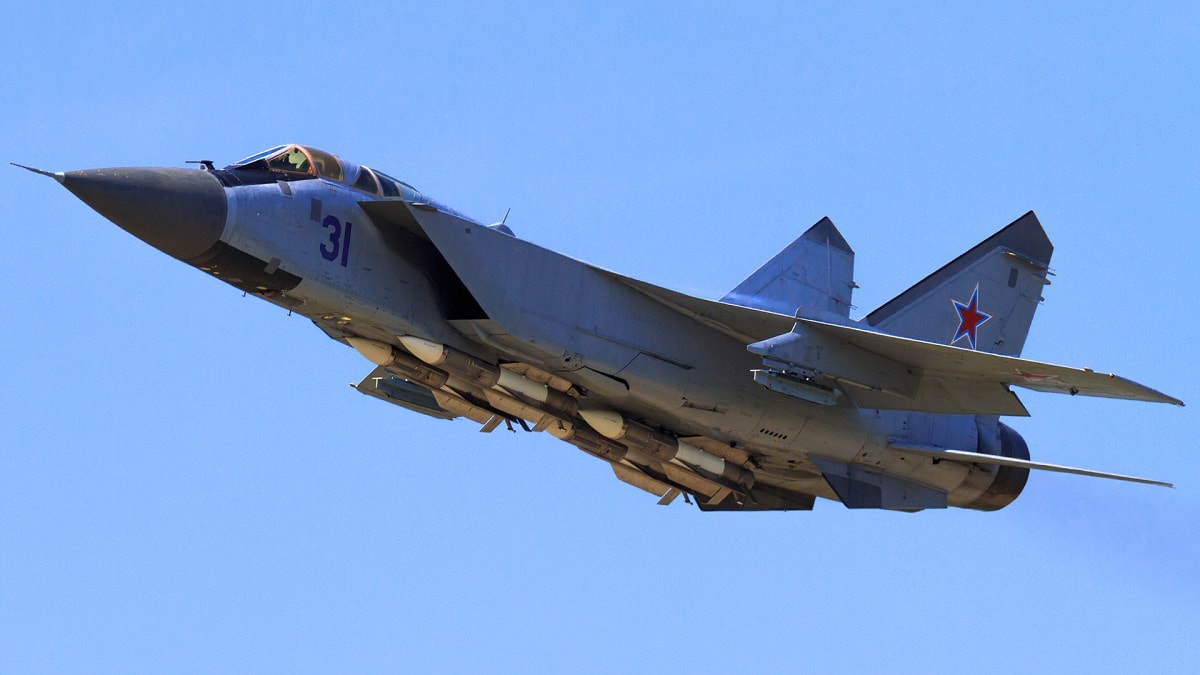A dangerous game continues to play out over the “neutral waters” of the Pacific Ocean where both Russia and the United States have launched aircraft on seemingly routine patrol missions. On Friday, the press office of Russia’s Eastern Military District announced that a MiG-31 fighter jet was “scrambled” to intercept and escort a U.S reconnaissance aircraft.
The latest close encounter of the military kind took place after Russian airspace control detected an aerial target approaching the Russian state border over the neutral waters of the western Pacific.
“A MiG-31 fighter from the Eastern Military District’s air defense forces was scrambled to identify the aerial target and prevent any violations of Russia’s state border,” the press office said in a statement, according to Tass.
What is a MiG-31 Fighter?
The Mikoyan MiG-31 fighter was developed during the Cold War era as a home-defense interceptor.
Codenamed “Foxhound” by NATO, the long-range, two-seat supersonic has been used previously in such intercept sorties. During its mission on Friday, the fighter jet’s flight had been performed in full compliance with international rules of airspace, the Eastern Military District was quick to add.
The Incident
“The Russian fighter crew identified the aerial target as a US Air Force RC-135 strategic reconnaissance aircraft and escorted it over the waters of the Pacific Ocean,” the press office noted. “No violations of Russia’s state border were allowed.”
Such encounters between Russian and U.S. aircraft again aren’t new, and throughout 2020 these had occurred with disturbing regularity. However, it seems both sides have continued to rattle sabers and possibly even shake some windows. NBC News reported on Thursday that a Russian bomber – likely a Tupolev Tu-95 (NATO reporting name “Bear”) – had flown so low over American fishing boats operating out of Alaska that by one account a rock thrown could have hit the aircraft.
It also isn’t just the United States that has had to contend with the Russian bombers harassing commercial vessels. Two nuclear-capable Tupolev bombers were intercepted by Japanese F-15 fighter jets over the Sea of Japan last month.
The Russian Ministry of Defense issued a statement, “Two Tu-95MS strategic bombers of the long-range aviation conducted a routine flight over the neutral waters of the Sea of Japan and the north-western part of the Pacific Ocean.”
The four-engine propeller bomber had been developed in the 1950s after Soviet planners had requested a four-engine bomber that could fly five thousand miles and hit targets across the United States. The choice of propeller-driven engines was made due to the fact that jet engines of the time burned through fuel too quickly. Despite its age, it should be seen a serious threat.
The Tu-95 bombers not only remain a key element of the air component of Russia’s nuclear triad, but many have been upgraded to carry the latest X-101 cruise missiles. Those missiles can be retargeted once the bombers are already airborne.
Peter Suciu is a Michigan-based writer who has contributed to more than four dozen magazines, newspapers and websites. He regularly writes about military small arms, and is the author of several books on military headgear including A Gallery of Military Headdress, which is available on Amazon.com.

